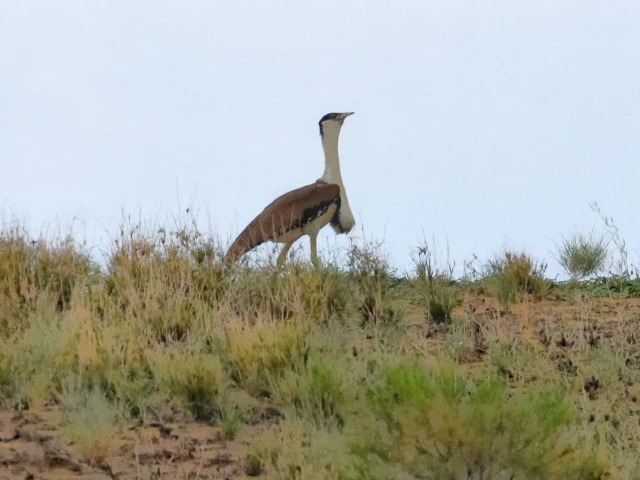The Hopeful Path of the Great Indian Bustard’s Recovery
In an encouraging turn of events for wildlife enthusiasts and conservationists alike, the Great Indian Bustard, affectionately known as the Bhakhar, is showing signs of population recovery in Pakistan’s Cholistan Desert. This critically endangered bird has faced numerous challenges, and recent observations made by Punjab wildlife authorities suggest that conservation efforts are starting to pay off.
Wildlife experts estimate that only about 80 to 90 Great Indian Bustards exist globally, with roughly 30 to 35 residing in the Cholistan region. This fragile recovery is largely attributed to enhanced conservation strategies, continuous field monitoring, and the establishment of a dedicated public wildlife reserve intended to protect this remarkable species.
Wildlife Conservator Syed Rizwan Mehmood shared that he recently documented rare footage of these magnificent birds during a field survey. "The presence of the Great Indian Bustard confirms its continued survival in Pakistan. It’s a major breakthrough," he expressed. Such news brings a glimmer of hope in the realm of wildlife conservation.
Bahawalpur Deputy Chief Wildlife Ranger Syed Ali Usman Bukhari emphasized the importance of dedicated habitat protection. “A Public Wildlife Reserve has been established in Cholistan specifically to protect the Great Indian Bustard," he noted, highlighting that strengthened conservation measures have led to a gradual increase in their population.
The Great Indian Bustard (Ardeotis nigriceps) is not only one of the heaviest flying birds in the world but also one of the most threatened species in South Asia. With males weighing up to 15 kilograms and standing nearly a meter tall, they easily catch your eye with their striking brown, white, and black plumage and a distinctive black patch on the neck. They have an incredibly low breeding rate, typically laying just one egg per year, which underscores the critical nature of their survival.
Globally recognized as "critically endangered" by the International Union for Conservation of Nature (IUCN), the Great Indian Bustard has faced severe threats due to habitat loss, hunting, and human disturbances. Thanks to the implementation of the Convention on International Trade in Endangered Species (CITES), international trade of this species is strictly prohibited, and domestically, both hunting and trade are banned under legal protections.
While the Great Indian Bustard is less frequently targeted than other birds like the Houbara Bustard—largely due to its rarity and the strict penalties for violators—conservationists remain cautiously optimistic yet vigilant. As one wildlife official stated, “The progress we’re seeing in Cholistan is encouraging, but the species remains on the brink. We must maintain and expand protection efforts, raise awareness, and safeguard critical habitats to prevent extinction.”
As we share in the joy of the Great Indian Bustard’s gradual recovery, it’s crucial to remember that every individual effort counts in the quest for wildlife conservation. By staying informed and engaged, we can all contribute to these vital efforts. If you’re passionate about wildlife and conservation, consider connecting with communities like Pro21st, where you can learn more and become involved in creating a difference. Let’s work together to protect our planet’s remarkable biodiversity!
At Pro21st, we believe in sharing updates that matter.
Stay connected for more real conversations, fresh insights, and 21st-century perspectives.





